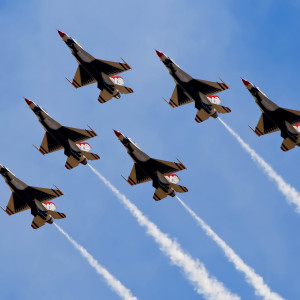I live in the Hampton Roads area of coastal Virginia. It’s an area that is loaded with young men and women who serve their nation for a living. I see these people up close, sacrificing every day to protect our nation’s freedoms, and we have much of which to be proud. They deserve every tool we can give them to protect America — and protect themselves.
How hard is that? Well, because of (yet another) lobbying fight in faraway Washington, D.C., it’s made harder than you think.
The current lobbying battle I refer to is between one interest supporting replacing an old fleet of F-15s and another one supporting the stealth F-35 for the U.S. Air Force. Both are scheduled to be bought by the Department of Defense, yet lobbyists have instigated a fight to get a bigger slice of the contracting pie, mucking up the works in the process.
First off, lobbyists should never determine what military hardware makes it into the field of battle. The proponents of the F-35 are reluctant to acknowledge that this program has been estimated to be the most expensive in U.S. history at well in excess of $300 billion. That is why they are pushing so hard for more contracts.
The F-35 program has been like so many other government contracts — way over budget. Popular Mechanics reported cost estimates for the F-35 have changed yearly over the last 15 years. It’s safe to say, though, that the program is the most expensive in U.S. history (so far), pegged at more than $320 billion in 2012. In 2014, the GAO found that the F-35 fleet would have operating costs 79 percent higher than the aircraft it was to replace.
A 2015 Pentagon Selected Acquisition Report said that program costs had increased 43 percent from 2001, including unit cost (up 68 percent). The report added that the F-35A’s cost per flying hour is $32,500 while the F-16C/D is $25,500. Private analysts have called the F-35 a “money pit,’ and argued that the purpose of Lockheed’s extensive national and global supplier base — which includes 1,300 suppliers in 45 states and nine foreign countries — was not so much to realize logistics efficiency and security, but to make sure the Joint Strike Fighter was “too big to fail.”
See what I mean about lobbyists having a strong interest in pushing for more and more planes, come hell or high water?
The F-15X, an upgraded version of the old F-15, is a cost-effective way to provide some diversity so the Air Force has different tools to choose from when fighting the next war. Aviation Week reported in February, “Advocates of the U.S. Air Force’s current plan to resume F-15 orders after a 19-year hiatus say it is an overdue response to an urgent requirement for quickly and affordably recapitalizing an aging air superiority fleet, while at the same time adding a comparatively flexible weapon system that can be adapted in the future to play a host of new roles, including perhaps electronic attack.”
The goal is to provide some diversity, and the Air Force recognizes that need despite the aggressive lobbying campaign by allies of Lockheed Martin to beat down the F-15X.
I want my tax dollars to be used effectively and efficiently to give our service members everything that they need to get their jobs done and come home safe. Lobbyists in D.C. pushing decisions that favor one contractor over another is a distraction that ends up hurting our military readiness. For shame.

